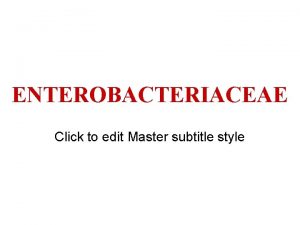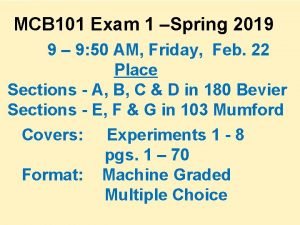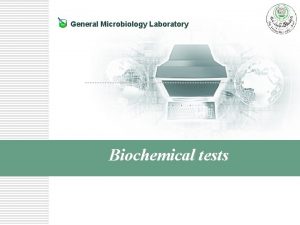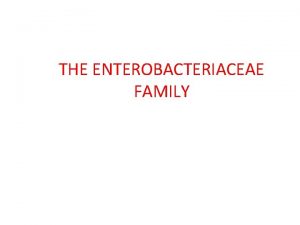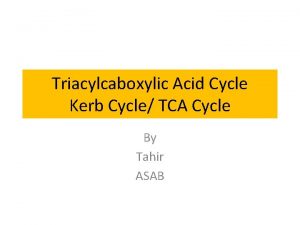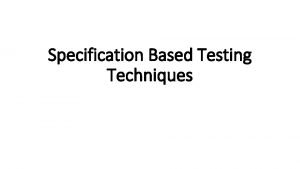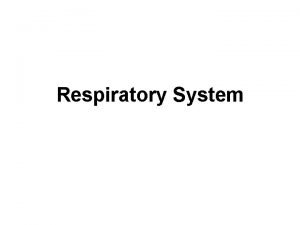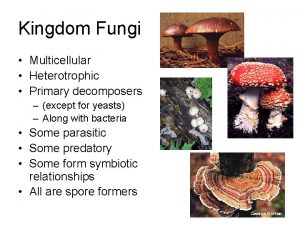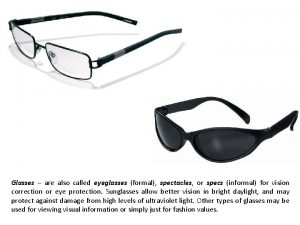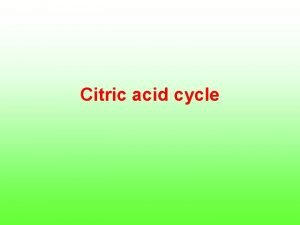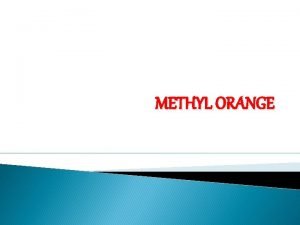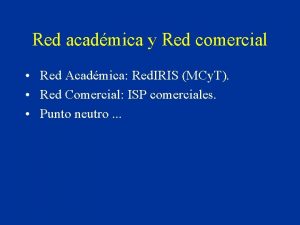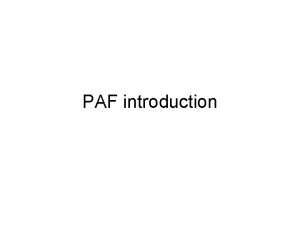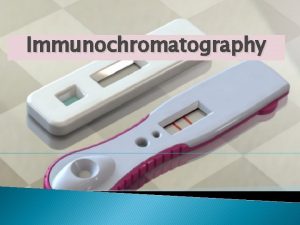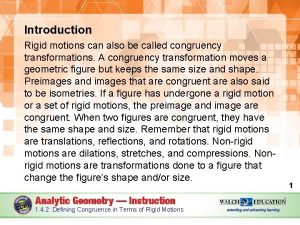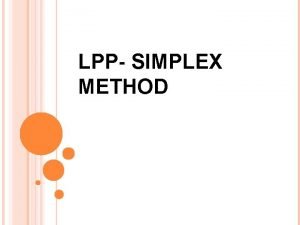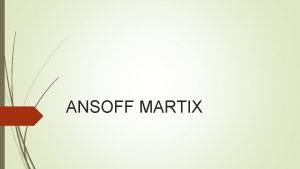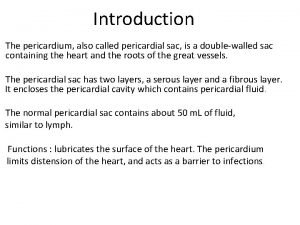THE METHYL TESTMR introduction Methyl Red also called













- Slides: 13


(THE METHYL TEST(MR

introduction Methyl Red, also called Acid Red 2, is an indicator dye that turns red in acidic solutions. It is a dark red crystalline powder. below p. H 4. 4 above p. H 6. 2 4. 4 6. 2 Methyl red is a p. H indicator; it is red in p. H under 4. 4, yellow in p. H over 6. 2,

The principle of the test Principle - To test the ability of an organism to produce and maintain stable acid end products from glucose fermentation. In micro biology, methyl red is used in the Methyl Red (MR) Test, used to identify bacteria producing stable acids by mechanisms of mixed acid fermentation of glucose.

The equalation Different bacteria convert dextrose and glucose to pyruvate using different metabolic pathways. Some of these pathways produce unstable acidic products which quickly convert to neutral compounds. Other organisms use the mixed acid pathway, which produces acidic end products such as lactic, acetic, and formic acid. These acidic end products are stable and will remain acidic.

The SIGNIFICANCE The Methyl Red test involves adding the p. H indicator methyl red. If the organism uses the mixed acid fermentation pathway and produces stable acidic end-products, the acids will overcome the buffers in the medium and produce an acidic environment in the medium. When methyl red is added, if acidic end products are present, the methyl red will stay red.

NOTE: # Methyl red differs from phenol red (which is used in the fermentation test) in that it is yellow at p. H 6. 2 and above and red at p. H 4. 4 and below. Phenol red turns yellow below a p. H of 6. 8. If you get these two p. H indicators confused, you will have a difficult time to get results ## The MR tests are particularly useful in the identification of the Enterobacteriaceae ### and used to differentiate between ceratain bacteria called coil forms E. COIL

The procedure of test 1 -Inoculate one broth using aseptic technique. Leave the other broth uninoculated (this will be a control). 2 -Inoculate buffered glucose broth and incubate at 37°C for 48 hours 3 -Obtain two MR-VP broths from the back shelf. 4 -Incubate at appropriate temperature (whatever temperature your organism grows well at). Incubate for two to five days. 5 -Obtain your broths from the incubator. 6 -Add a few drops of Methyl Red to each broth culture. Methyl Red is found in small dropper bottles on the back shelf. 7 -Observe the color (which should develop within a few minutes.

The type of bacteria which use in this test… . Escherichia coli and Enterobacter cloacae. ** After incubation, you would perform an MR test on one tube of Escherichia coli and one tube of Enterobacter cloacae, .

When methyl red is added to MR broth that has been inoculated with Escherichia coli, it stays red. This is a positive result for the MR test. When methyl red is added to MR-VP broth that has been inoculated with Enterobacter cloacae, it turns yellow. This is a negative MR result.


The result Escherichia coli, it stays red. This is a positive result for the MR test. Enterobacter cloacae, it stay yellow. This is a negative MR result.

The result red MR positive (+) yellow MR negative (-)
